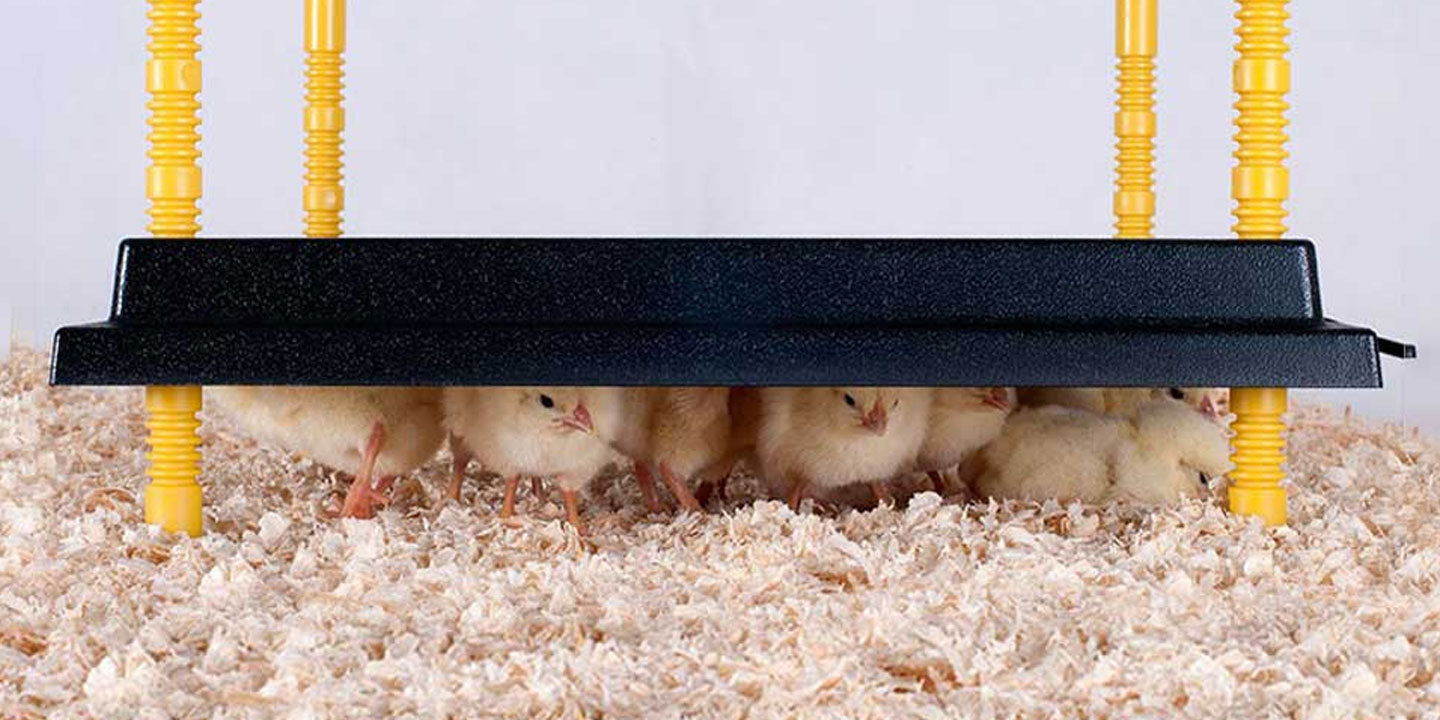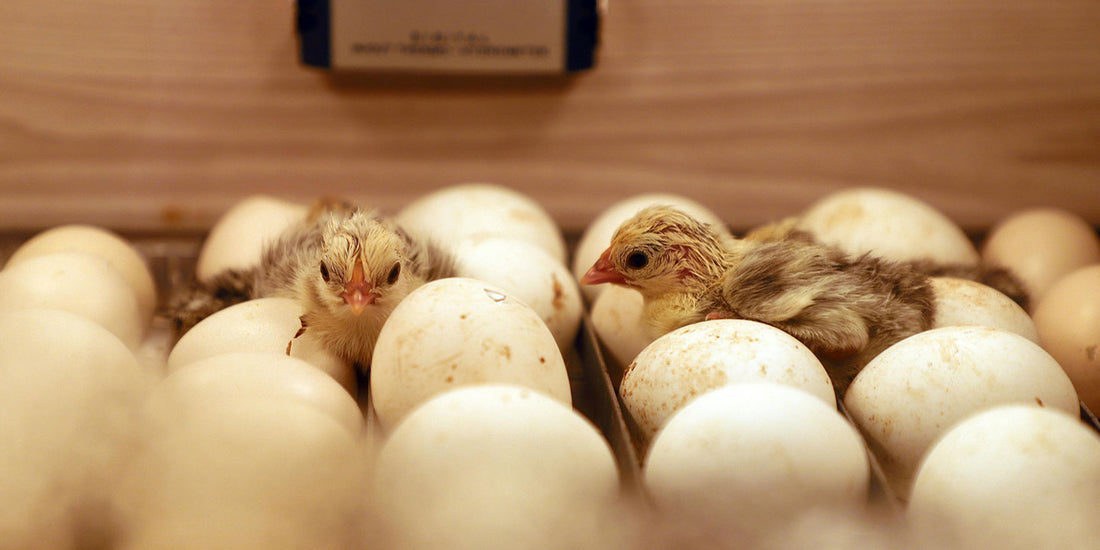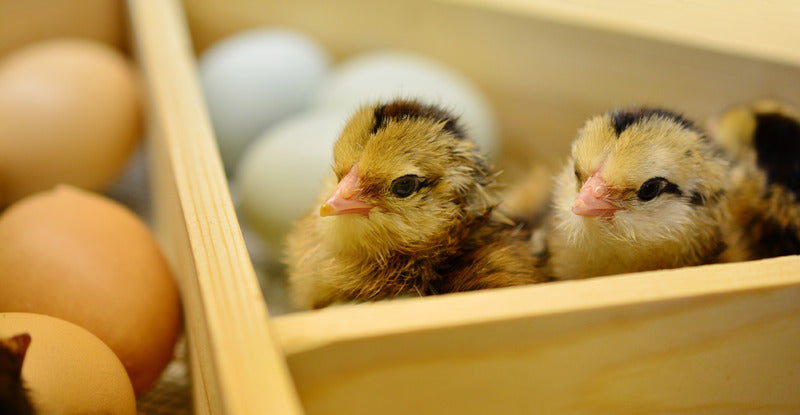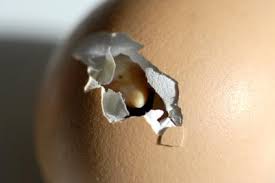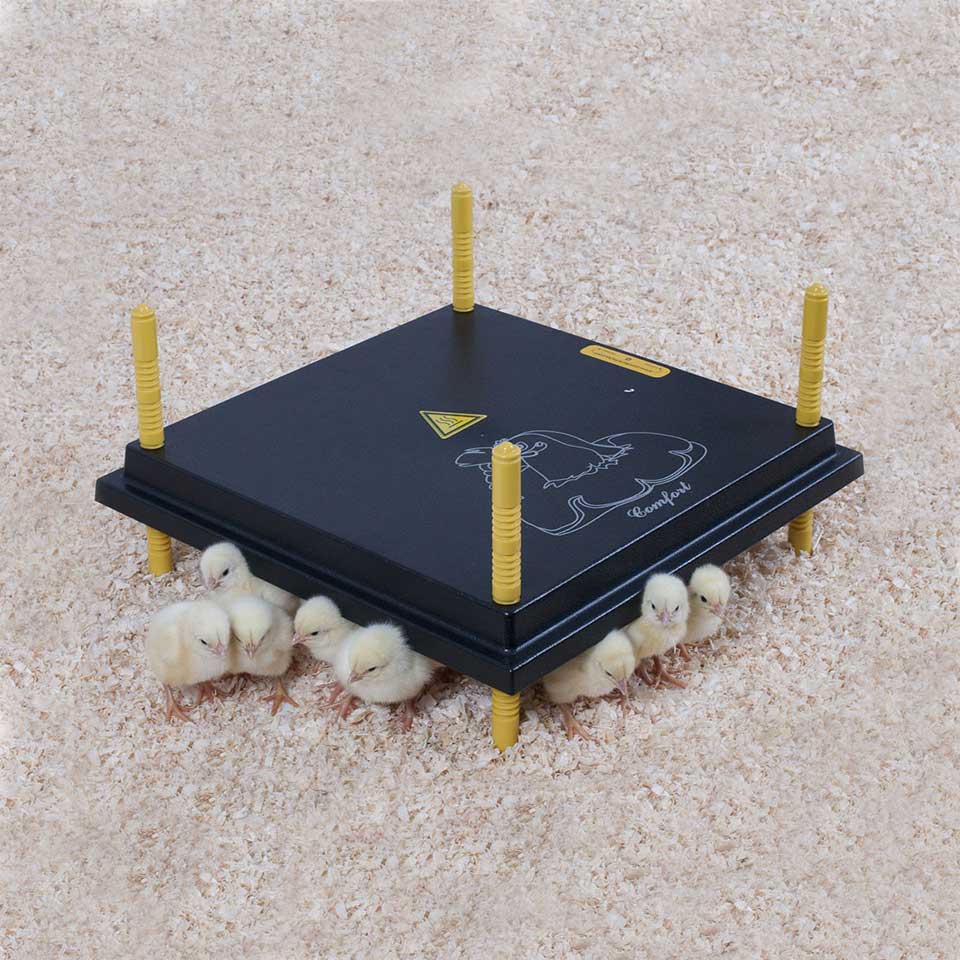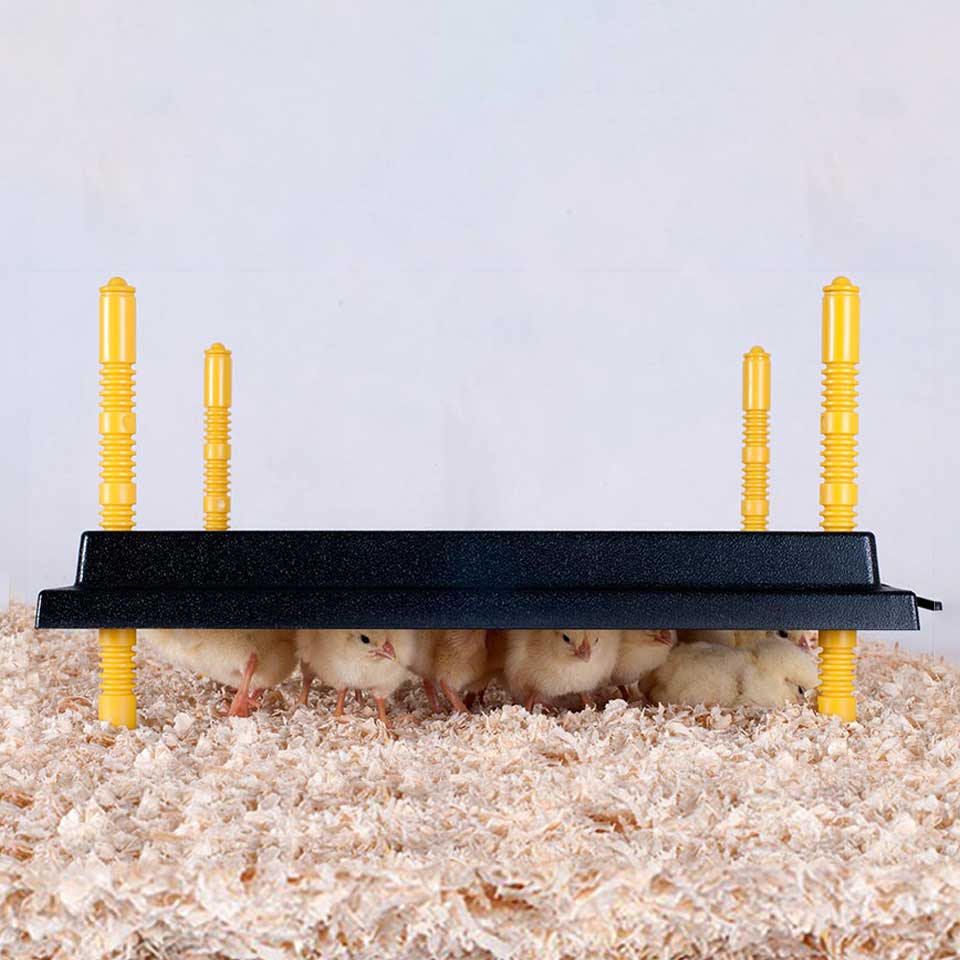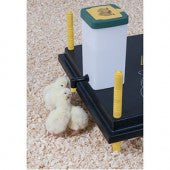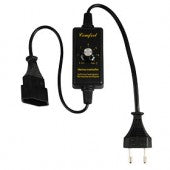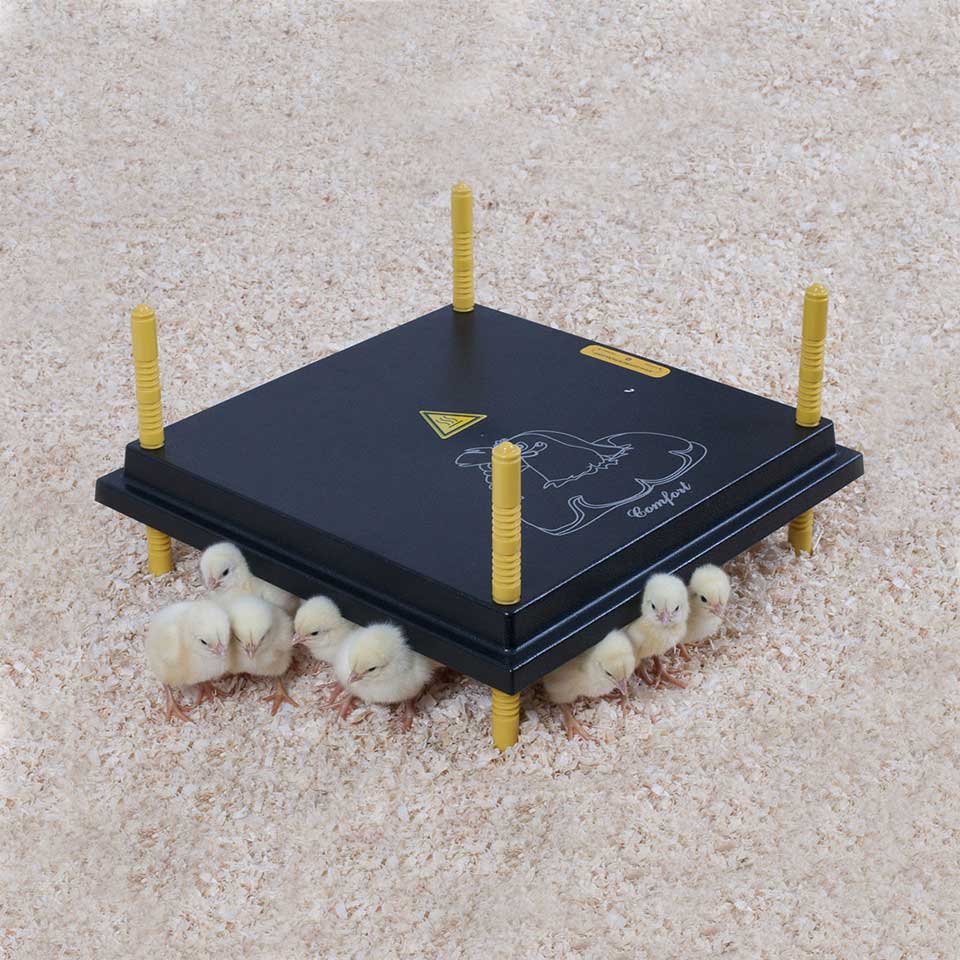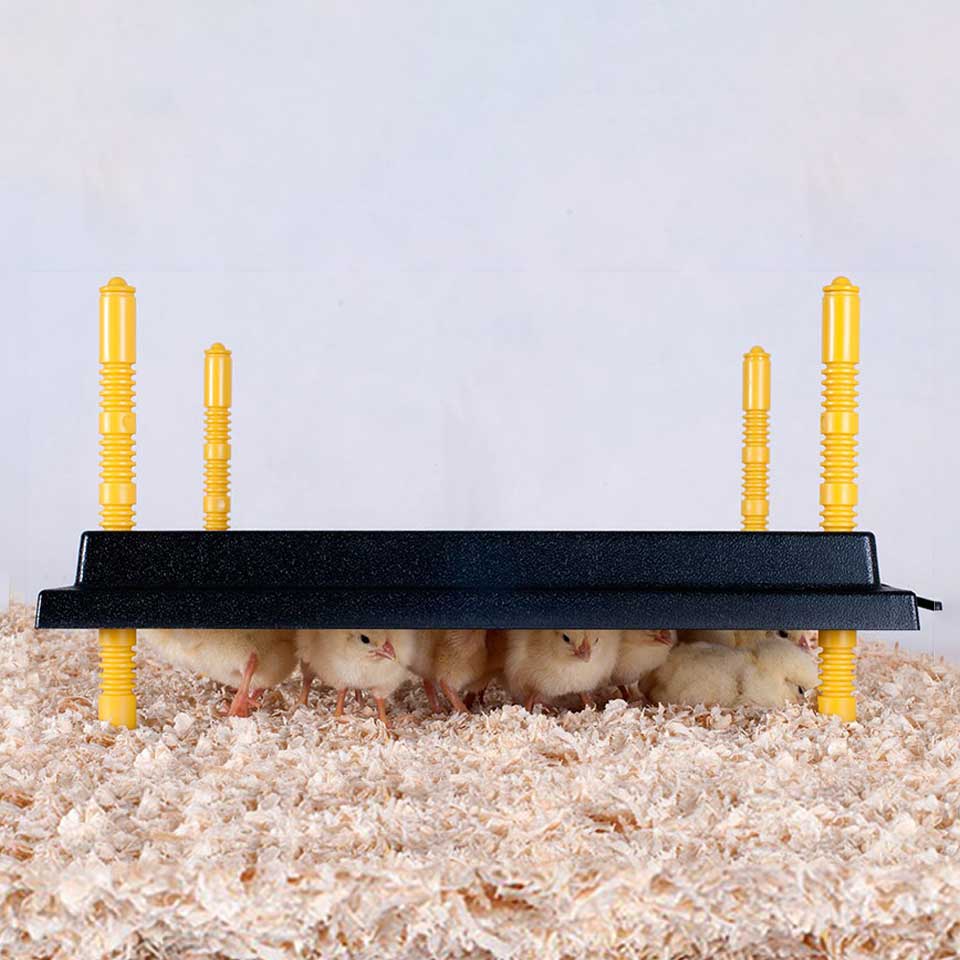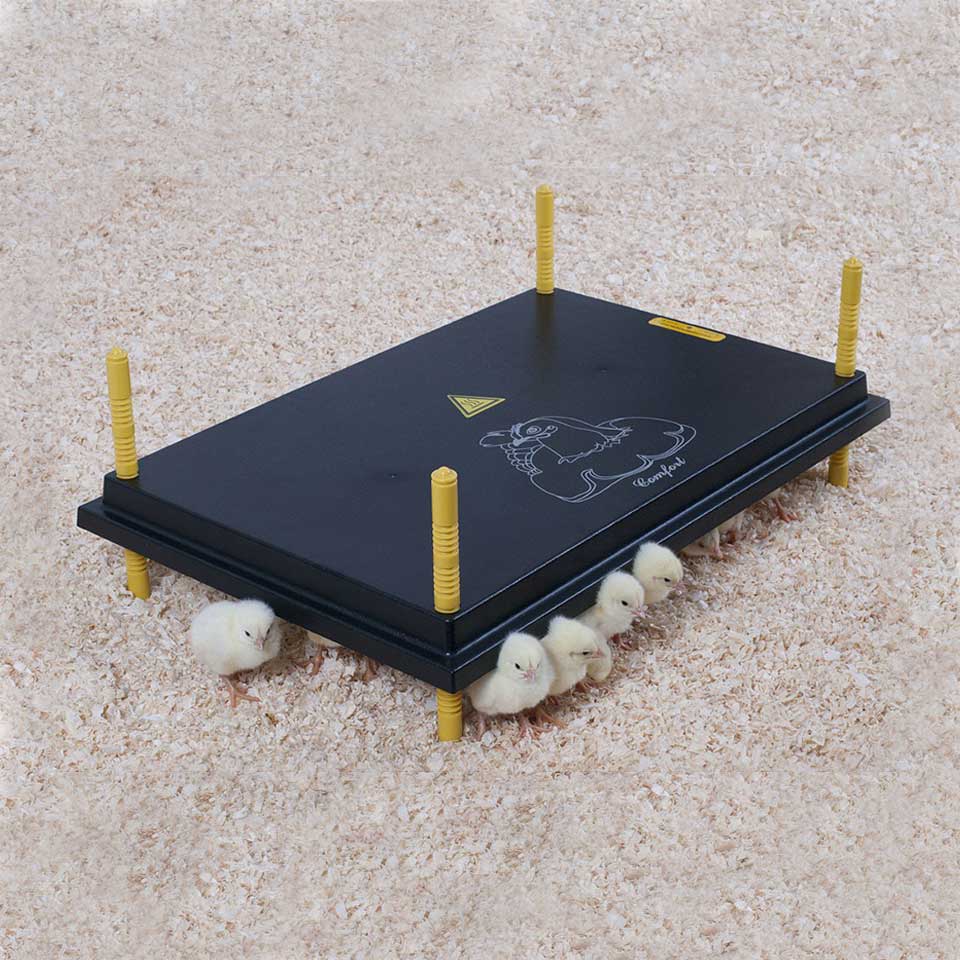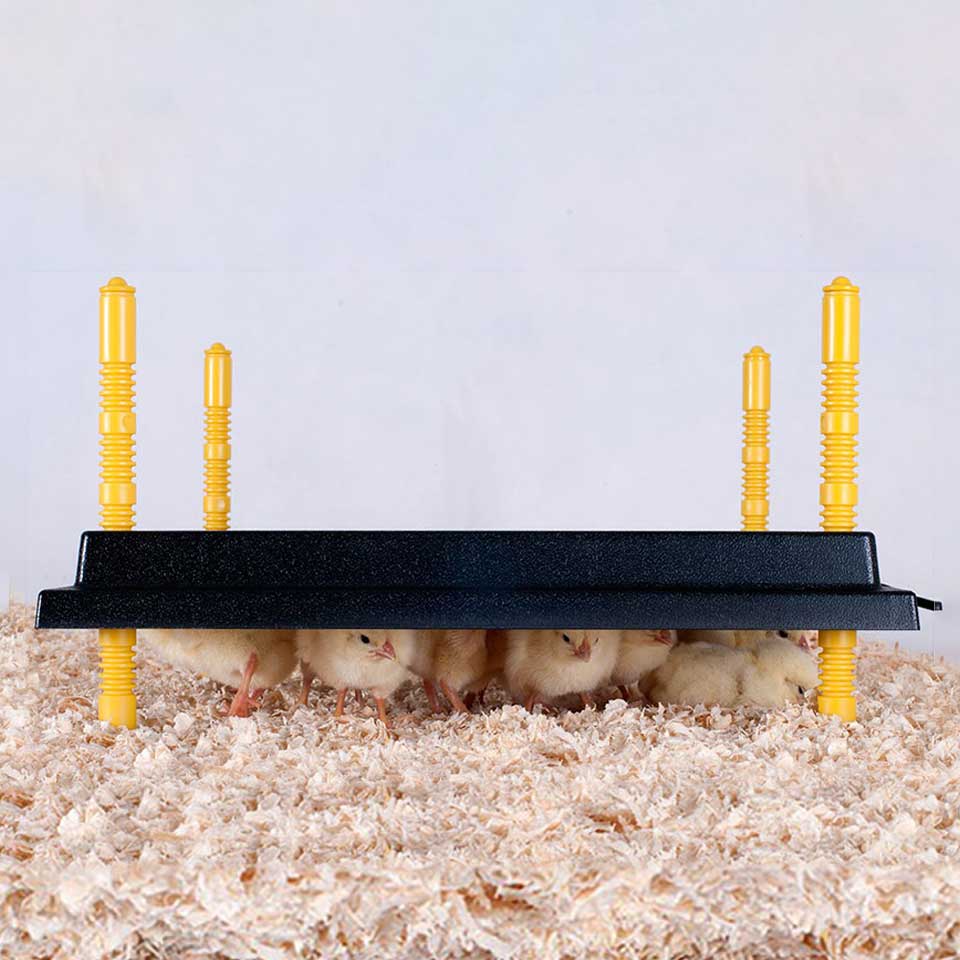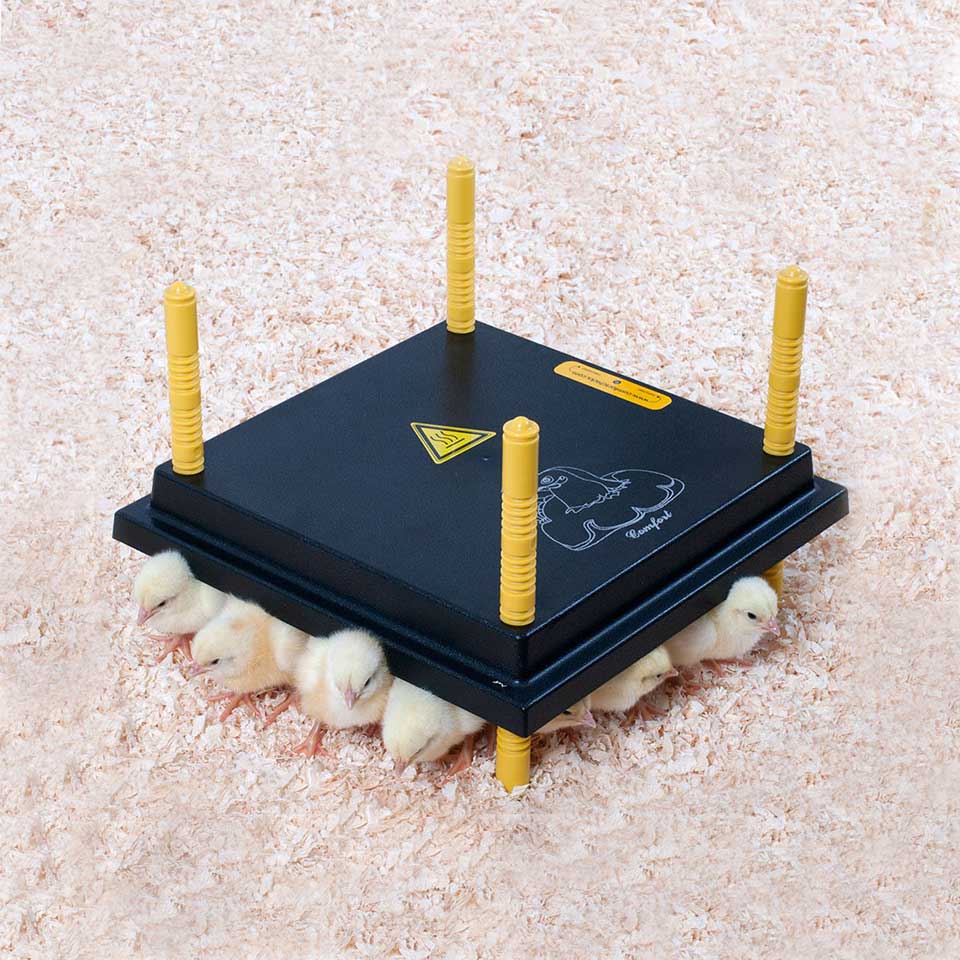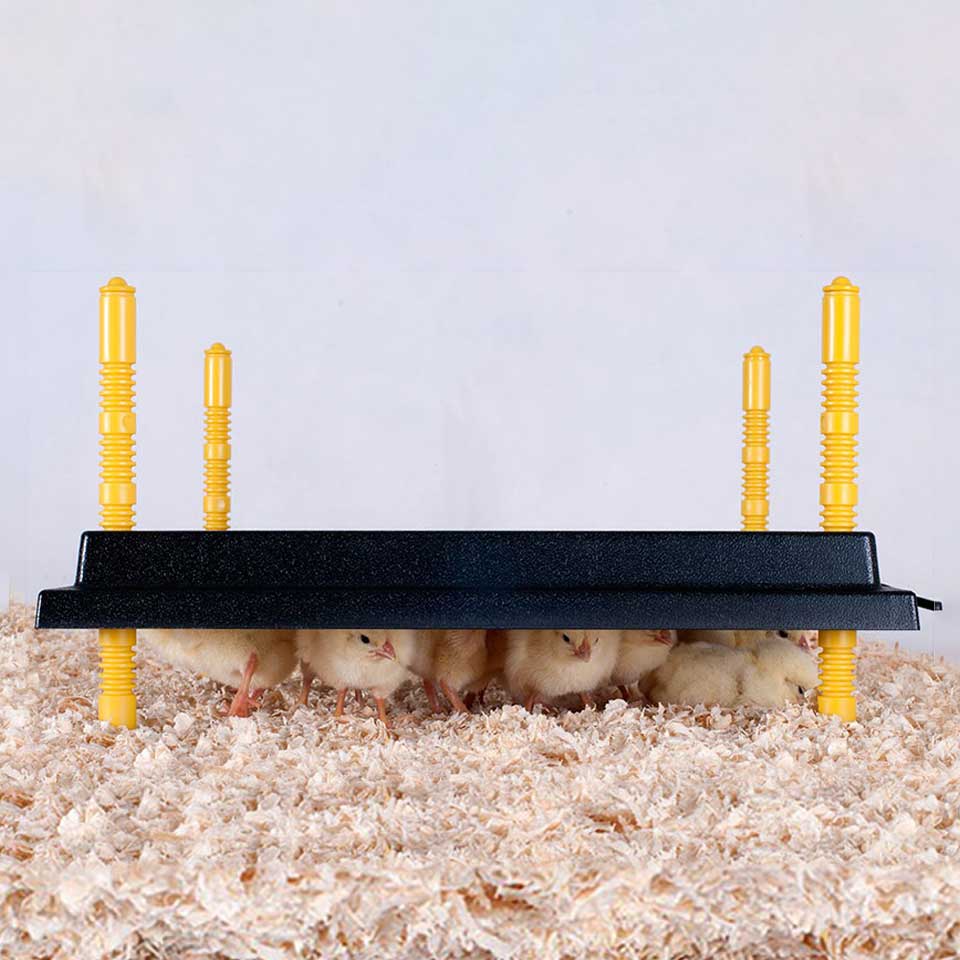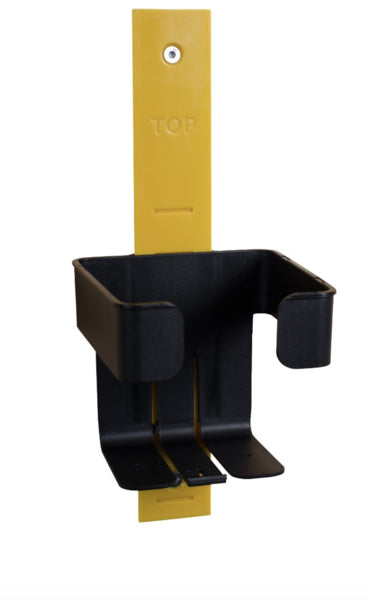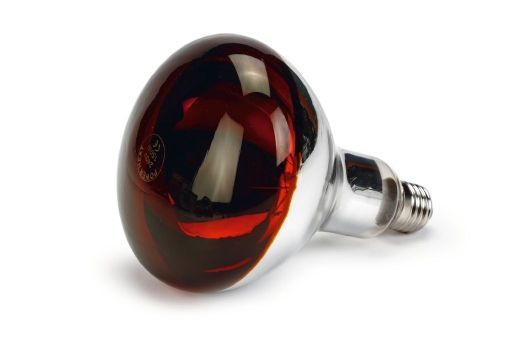It’s a great feeling when you’ve successfully hatched a clutch of eggs and you watch your new little chicks fluffing up ready to get out of the incubator. You are now ready to transfer them to a brooder.
When it comes to raising chicks, a brooder is essential for providing a warm, safe, and controlled environment. A brooder serves as a temporary home for chicks until they are old enough to be moved to a coop.
Brooding generally take up to 6 weeks, with temperatures adjusted over time. Remember to follow the instructions when maintaining your heat.
Brooder Types
There are several types of brooders, each with its own advantages and suited to different needs.
- Cardboard Brooder
- Plastic Brooder
- Metal (Wire) Brooder
- Pre-made Plastic Poultry Brooder (Commercial Brooder)
- Heat Plate Brooder
- Heat Lamp Brooder
- Brooder Box with Dividers
- Mobile Brooder
- DIY (Custom-Built) Brooder
Choosing the Right Brooder
The right brooder for you depends on several factors, including:
- The number of chicks you plan to raise.
- Whether the chicks will be indoors or outdoors.
- Your budget and time constraints for building or buying.
- Whether you prefer a temporary or permanent setup.
Each type of brooder offers its own set of benefits, so it's important to consider your specific needs and resources before choosing one!
What makes a good brooder?
A good brooder is essential for ensuring the health, safety, and proper development of your chicks in their early days of life. Here are the key qualities and features that make a brooder good:
1. Adequate Size
- A good brooder provides enough space for chicks to move around, stretch their wings, and explore. As chicks grow, they need more space to prevent overcrowding, which can lead to stress and the risk of injury.
- A general rule of thumb is to provide about 0.5 to 1 square foot per chick in the first few weeks of life, and more space as they grow.
2. Proper Temperature Control
- Chicks need a warm environment for the first few weeks of life. A good brooder should be able to maintain a warm temperature (around 35°C) during the first week, gradually decreasing each subsequent week until they are ready to be moved to a coop.
- This can be achieved using a heat lamp, heat plate, or a brooder heater. A thermometer should be included in the brooder so you can monitor the temperature.
3. Stable and Safe Temperature
- The brooder must maintain a stable temperature without dramatic fluctuations, which can stress the chicks and affect their development. Sudden temperature drops or spikes can cause chilled chicks (if too cold) or overheated chicks (if too hot).
- A draft-free environment is important, as drafts can quickly cool the chicks and lead to health problems.
4. Good Ventilation
- Proper ventilation is essential to keep the air fresh, prevent moisture buildup, and avoid the development of harmful gases, such as ammonia, which can harm the chicks’ respiratory systems.
- A good brooder will have adequate air circulation but should not be drafty, as drafts can cause chicks to get cold.
5. Cleanliness and Easy to Clean
- A good brooder should be made from materials that are easy to clean and disinfect. Cleanliness is vital to prevent the growth of bacteria and the spread of disease.
- A smooth surface without corners or cracks where dirt can accumulate is ideal. Also, having a removable floor or tray that makes cleaning easier can be a big help.
6. Safe and Secure
- The brooder should be escape-proof, especially if you are using a small brooder or keeping chicks in an area where they could potentially squeeze through gaps.
- Secure lids or walls prevent chicks from jumping out or getting into trouble. Be sure that there are no sharp edges or small openings where chicks could get caught.
7. Easily Accessible
- A good brooder should have easy access to both the chicks and the feeding/watering areas. This makes it easier for you to check on the chicks, adjust their environment, and provide food and water.
- If the brooder is large, it should have doors or lids that can be opened without disturbing the chicks too much. This ensures minimal stress during interactions.
8. Adequate Lighting
- Chicks need a day-night cycle to help them develop. While they need warmth, they also need darkness at night to rest and sleep.
- A good brooder should allow you to provide light during the day for warmth and visibility, but you should also be able to turn off the lights at night to give them a proper rest.
9. Easy to Monitor
- A good brooder allows you to monitor the chicks easily, whether it’s checking their behavior, food and water consumption, or temperature.
- Some brooders come with built-in temperature and humidity monitors, which help you track the environment without opening the brooder.
10. Adequate Bedding
- Bedding is necessary to absorb waste, provide comfort, and help prevent injuries to chicks. A good brooder will have an appropriate bedding material, such as wood shavings, straw, or paper towels for the first few days.
- The bedding should be deep enough to absorb moisture but not so deep that chicks could get buried in it.
11. Protective from Predators
- The brooder must provide protection from predators, including household pets (such as dogs or cats) or wild animals (like rats). It should be secure and safe to prevent any potential harm.
12. Ease of Movement and Transport (if necessary)
- If you're planning to move the brooder or need to take it to different areas, a good brooder will be portable. Consider brooders with handles or lightweight materials that make them easy to move around without disturbing the chicks.
13. Self-Regulated Heating Options (Heat Plates)
- Some brooders use heat plates instead of heat lamps. A good brooder can include a self-regulated heating system like a heat plate, which mimics the warmth a mother hen provides. Heat plates are energy-efficient, and chicks can regulate their body temperature by moving closer or farther from the plate.
